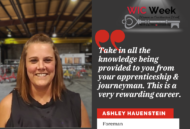Construction Safety Week topic tip for the day explores driving impaired. BMWC has made a commitment to safety to be among the best industrial construction companies that specializes in custom steel fabrication, industrial piping systems, foam fire suppression systems, among other industrial maintenance services.
 State Farm conducted an online survey and reported the following: 1 in 5 people admitted to surfing the Internet while driving. Most of them reported accessing the net when stopped at a stop light or in heavy traffic. They also said they commonly surf the web while driving alone, during the day, or on long drives on the interstate.
State Farm conducted an online survey and reported the following: 1 in 5 people admitted to surfing the Internet while driving. Most of them reported accessing the net when stopped at a stop light or in heavy traffic. They also said they commonly surf the web while driving alone, during the day, or on long drives on the interstate.
The report goes on to list the top five reasons (can you relate to any of these?):
- Finding/reading driving directions
- Reading email
- Looking up/referencing specific information of immediate interest
- Looking at/reading social networking sites (Facebook, Twitter, etc.)
- Composing/sending email
Below is a link to a video that was filmed in November of 2012 on 25 mile stretch of a highway in Chicago. A car was outfitted with cameras to capture occurrences of cell phone use while driving. How many people in 25 miles were “caught” looking down at their phones? 10? 20? It was over 30!
http://www.youtube.com/watch?v=zqoyPMmFNA4
We’ve already discussed ways to eliminate several of the distractions listed above. As for the ones we haven’t addressed yet;
Finding/Reading Driving Directions – If you are traveling some place new and need driving directions, enter the address before you start driving, if something changes and you need to redirect; pull over, come to a stop (in some cases that may mean exiting the highway to safely do so), then look up or enter the new information.
Looking up information of “immediate” interest, social networking and email – Just don’t do it while driving. If you have a passenger with you that is capable, let them be your scribe or “reporter”, otherwise it needs to wait. If it’s so important that you need to know right now, than you can take the time to safely pull over. Remember, it’s not just your life you are putting at risk. You may have passengers (spouses, children, relatives, friends), not to mention other drivers, passengers, or pedestrians that may be put at risk for your bad habit.




